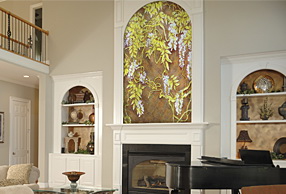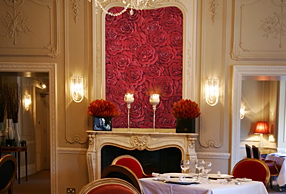
Many new ways of working with designer glass appeared possible to the interior designers. Applications are vary and range from designer glass panels to carved murals and sculptures. Our production expertise includes carved, etched, stacked and other types of architectural trends. From start to finish we will help you with the process of conceptualization and bringing your vision into reality. Glass industry expands it’s technical abilities year by year, especially in the field of designer glass works. If several centuries ago working with this medium mostly meant being a stained glass artist or blowing the substance in heat ovens, contemporary trend involves so many dimensions as carving and etching, working with prints, using LED lighting inside paneling, and other styles of production.
Interior Designers shift to designer glass applications

This is equally relevant to both residential and commercial glass industry. In recent years we have seen increase in interest of possibilities of working with transparent mediums from both interior designers and architects. Not so long ago ordering eclectic designer glass doors was considered unorthodox decision; now we are receiving orders for designer glass coffee tables from large coffee shop chains.
Glass is a natural product that is derived out of sand and has been used by humanity since time immemorial. We believe in leaving a low carbon footprint in the environment by our production processes. Our company utilizes all latest technologies in contemporary production to make our work as green as possible. Being unique medium in a sense that it is both transparent and hard in its solid form glass offers room for creativity. With the advancement of technology it becomes more durable and efficient medium. Lamination of glass panels can turn them into stronger building units, tempering will increase safety and add structural strength.
Transparent glass walls let more energy into your space
Many discovered the ability of glass to let more air and space and start using that for creating new style of urban architecture. Since the middle of XX century this material became a fashionable element in interior design. Creating huge wall of transparent medium allowed letting so much more brighter energy into the buildings. It created a sensational understanding on how being inside space without enough connection to daylight can decrease your efficiency and depress the mood. Many companies start utilizing wall paneling out of transparent mediums for many reasons both aesthetic and practical. Designer glass partitions can be quick and efficient way to divide a new workspace. They are good for creating privacy but still maintaining a feel of team within a workspace.
Laminating for strength
There is a well known folk story about how separated individually straws are easy to break but when gathered into a broom create so much strength by reinforcing each other that become practically unbreakable. Similar concept is true with laminated glass. Assembling layers of flat surfaces together and then gluing them together by a thin layer of resin creates a variety of product called laminated glass. Depending on the desired strength and limitation on the thickness of the unit several layers of glass can be laminated together. We see that often done in applications where burglary or fire hazard can be a concern. Combined into many layers this surface become practically impossible to break through.
Colored or Textured?
With so many technical options it becomes hard sometimes to choose the style of designer glass needed for the project. Shall you print on it or hand paint the object? Shall the installations be laminated or framed? Applying paint over textured piece gives much more flexibility in artistic deliverance; objects can be much more detailed and resemble the quality of a photo. When “backed” or heat treated paints become darker in color and sometimes lose their fine detailing. The paints will stay longer and withstand exposure to moisture better.